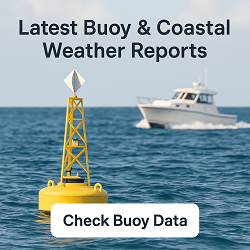Grant City, MO Weather Forecast and Current Conditions
Current Conditions From Nearby Station
Feels Like 40°F
at
Point Forecast at a Glance







7-Day Temperature Trend
Week Ahead Summary
High temperatures start near 63°F, reaching 68°F before cooling to 46°F, then recovering to 46°F by week's end. Mostly dry conditions with only one day showing rain chances.
Climate Context
This week's forecast shows temperatures running 8°F above the historical average for November. Normal highs for this period are around 50°F with lows around 29°F.
This Date in Weather History
1974 - A great Alaska storm in the Bering Sea caused the worst coastal flooding of memory at Nome AK with a tide of 13.2 feet. The flooding caused 12 million dollars damage, however no lives are lost.
Grant City, MO 7 Day Weather Forecast Details
Thursday Nov 13

Day: Mostly sunny. High near 63, with temperatures falling to around 57 in the afternoon. South southeast wind 5 to 10 mph, with gusts as high as 18 mph.

Night: Patchy fog after 5am. Partly cloudy, with a low around 44. South wind around 3 mph.
Friday Nov 14

Day: Patchy fog before 9am. Mostly sunny, with a high near 68. South wind 2 to 8 mph.

Night: Partly cloudy, with a low around 51. South southwest wind around 7 mph.
Saturday Nov 15

Day: Mostly sunny, with a high near 67.

Night: Mostly clear, with a low around 37.
Sunday Nov 16

Day: Sunny, with a high near 57.

Night: Partly cloudy, with a low around 38.
Monday Nov 17

Day: Rain showers likely. Partly sunny, with a high near 55. Chance of precipitation is 60%.

Night: A chance of rain showers. Mostly cloudy, with a low around 35. Chance of precipitation is 40%.
Tuesday Nov 18

Day: Partly sunny, with a high near 49.

Night: Mostly cloudy, with a low around 33.
Wednesday Nov 19

Day: A slight chance of rain showers after noon. Mostly cloudy, with a high near 46.
About Grant City, MO
Content from Wikipedia, licensed under CC BY-SA 3.0.
How We Provide Better Local Weather
Current conditions: We use the nearest available station to your location - including professional MESONET/MADIS and local weather stations - often miles closer than regional airports.
Forecasts: National Weather Service point forecasts predict for your specific area, not broad regional zones, making them far more relevant to your location.



